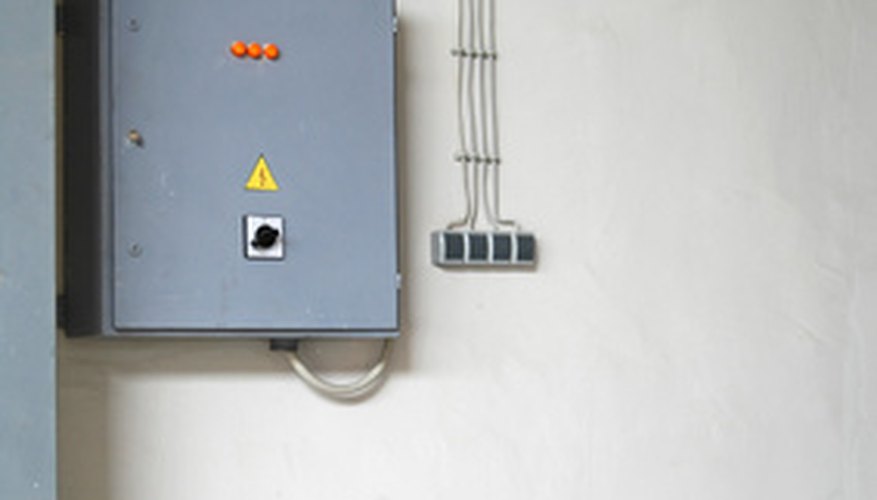A national set of standards ensures that trained personnel are able to respond quickly in case of electrical emergency in the workplace. The Occupational Health and Safety Administration (OSHA) and the National Fire Protection Association (NFPA) have outlined the amount of clearance necessary around an electric panel. They have also determined that all live components must be enclosed to protect workers.
Clearance
To ensure that an electrical panel can be accessed at all times---during inspection, maintenance or emergency---OSHA has determined that the working space in front of the equipment must be at least 30-inches wide (or the width of the equipment). A clearance of at least 3 feet is required for equipment using 120 to 250 volts. The workspace also must permit at least a 90-degree opening of all hinged panels and equipment doors. This space cannot be used for permanent fixtures or temporary storage. All electric equipment installed, modified or repaired after March 1972 must comply with the current standard. Sufficient headroom---6.5 feet---is also required in the workspace as of a 2007 update.
- To ensure that an electrical panel can be accessed at all times---during inspection, maintenance or emergency---OSHA has determined that the working space in front of the equipment must be at least 30-inches wide (or the width of the equipment).
- The workspace also must permit at least a 90-degree opening of all hinged panels and equipment doors.
Dead Front
Because they include so many live wires and other charged parts, electrical panels must have a "dead front," according to OSHA standards. This means a cover must be in place so the person on the "operating side of the equipment" cannot be exposed to any live components. In commercial buildings, these dead fronts must be locked and access must only be granted to trained personnel. The U.S. Office of Compliance adds that any live parts of equipment operating with at least 50 volts must be protected by NFPA-approved enclosures.
- Because they include so many live wires and other charged parts, electrical panels must have a "dead front," according to OSHA standards.
- The U.S. Office of Compliance adds that any live parts of equipment operating with at least 50 volts must be protected by NFPA-approved enclosures.
"Readily Accessible"
Electrical panels not only have to meet the explicit measurement standards of OSHA and NFPA, they must also be reasonably considered "readily accessible." In a 2005 letter to the Marshall Space Flight Center, OSHA Director Richard Fairfax further clarified the term. If someone must use portable ladders, stools or chairs to reach the electrical equipment, it is not considered readily accessible. Climbing over or moving furniture and other impediments to reach the equipment also constitutes a violation of the "readily accessible" standard. If electrical panels are locked, they are still considered readily accessible, as long as qualified persons can quickly access the keys.
- Electrical panels not only have to meet the explicit measurement standards of OSHA and NFPA, they must also be reasonably considered "readily accessible."
- If electrical panels are locked, they are still considered readily accessible, as long as qualified persons can quickly access the keys.
